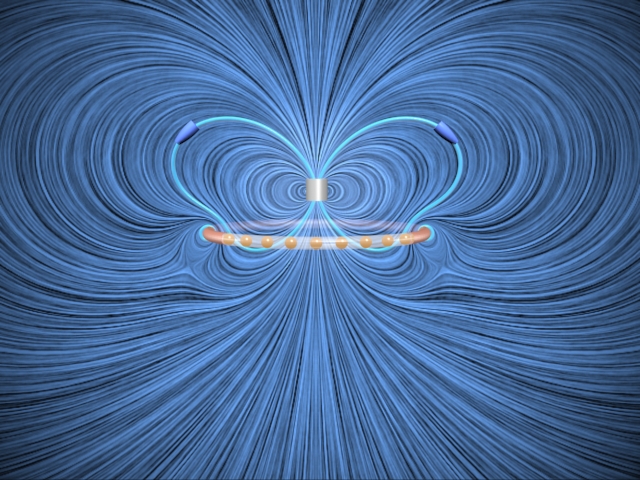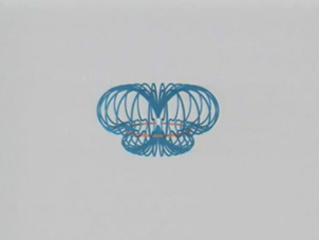| DESCRIPTION:
A magnet
is dropped through a conducting cooper ring. As the magnet
falls under gravity, a current is induced in the ring
that tries to keep the magnetic flux through the area
of the ring constant. This corresponds to a field that
produces a force that opposes the motion of the magnet:
as it approaches from above, and the induced current generates
a field that pushes the magnet upwards from below.
Once
the magnet falls through the ring, the direction of the current
changes to produce a field that tries to pull the magnet upwards from above. Since the resistance of the ring
is finite and the magnet is heavy, the flux
through the ring does not stay constant, and the relatively
small magnitude of the induced field does not generate
a force strong enough to prevent the magnet from falling
through.
The first animation shows the magnetic field configuration
around the magnet as it falls. The current in the ring
is indicated by the small moving spheres. The motions
of the field lines are in the direction of the local
Poynting flux vector.
The second animations a 3D version of the same process.
Click on either image to see the animations.
|



